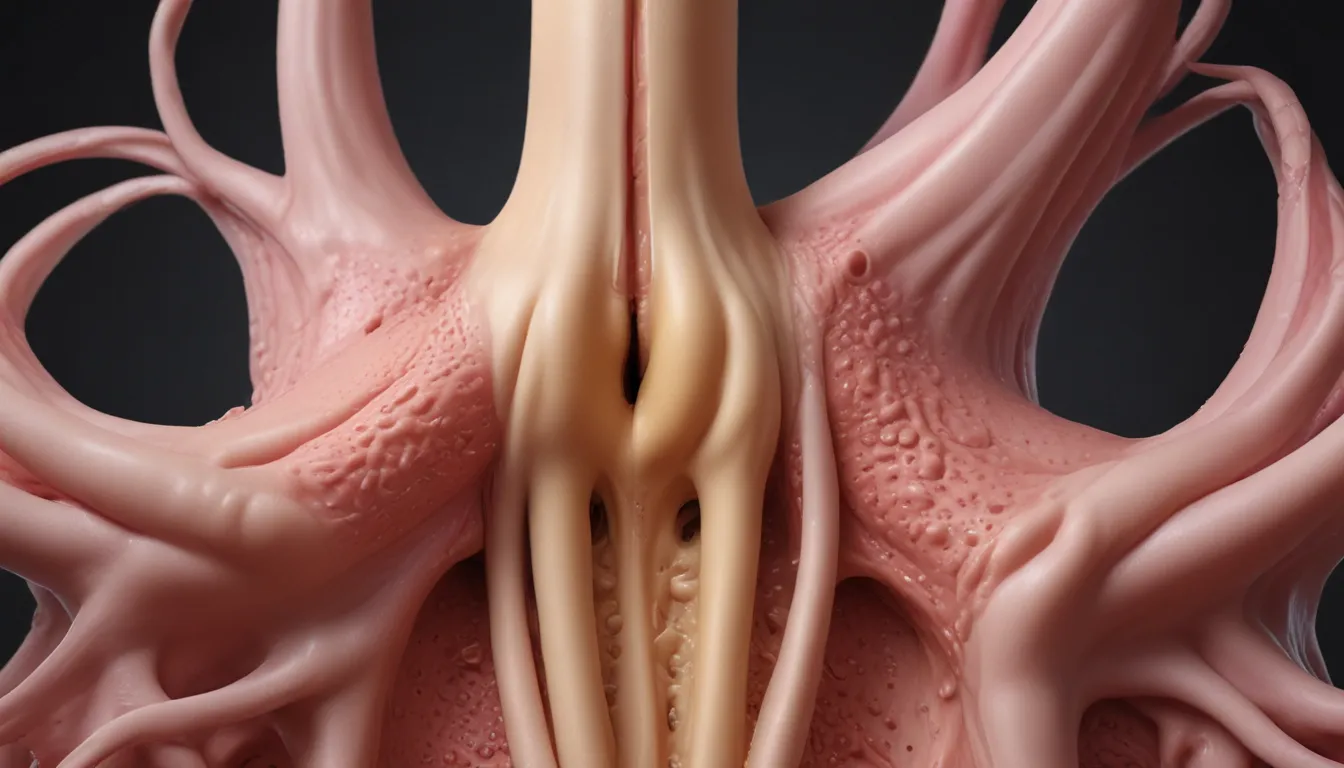A Note About Images: The images used in our articles are for illustration purposes only and may not exactly match the content. They are meant to engage readers, but the text should be relied upon for accurate information.
In the realm of human sexuality, the female anatomy harbors hidden gems waiting to be discovered. One such enigmatic structure is the urethral sponge, also known as the female prostate or G-spot. This small yet significant area within the female body plays a pivotal role in sexual pleasure and reproductive health. Delving into the mysteries and realities of the urethral sponge not only enhances our understanding of human sexuality but also sheds light on the complexities of the female body. In this article, we will embark on a journey to explore 11 intriguing facts about the urethral sponge, unraveling its function, significance, and dispelling misconceptions along the way. Whether you are curious about the science behind it, interested in enhancing sexual experiences, or simply seeking to broaden your knowledge, this deep dive into the urethral sponge will provide valuable insights into this lesser-known aspect of female anatomy.
The Enigmatic Urethral Sponge: A Fascinating Phenomenon
The urethral sponge, named after the pioneering German gynecologist Dr. Ernst Gräfenberg, is a mass of spongy tissue that surrounds the urethra, located on the anterior wall of the vagina. Rich in nerve endings and composed of erectile tissue, the urethral sponge can swell when sexually stimulated, potentially leading to heightened sexual pleasure. Ongoing research endeavors to better understand its role in female sexual response, with some scientists speculating that it may play a part in female ejaculation.
Exploring the Intricacies of the Urethral Sponge
- Named After Dr. Ernst Gräfenberg: Dr. Ernst Gräfenberg, a German gynecologist, first documented the urethral sponge in the 1940s, paving the way for further exploration into this fascinating aspect of female anatomy.
- Spongy Tissue Surrounding the Urethra: Positioned on the anterior wall of the vagina, the urethral sponge is a mass of spongy tissue enveloping the urethra, contributing to sexual arousal and pleasure.
- Role in Sexual Arousal: When sexually aroused, the urethral sponge can swell and become more sensitive, potentially enhancing sexual pleasure for individuals assigned female at birth.
- Potential Involvement in Female Ejaculation: Some researchers speculate that the urethral sponge may be involved in the process of female ejaculation, although this remains a topic of ongoing debate and exploration.
- Abundance of Nerve Endings: The urethral sponge houses a high concentration of nerve endings, which can intensify sexual arousal and pleasure when stimulated.
- Composition of Erectile Tissue: Similar to the clitoris and the penis, the urethral sponge is composed of erectile tissue that can become engorged with blood during sexual arousal.
Unveiling the Connection with Skene’s Glands
The urethral sponge is intricately linked with Skene’s glands, which are believed to play a significant role in female sexual response and may contribute to the production of female ejaculate. The size and sensitivity of the urethral sponge can vary among individuals, leading to differences in sexual response and pleasure. For some individuals, stimulation of the urethral sponge can be a potent source of sexual pleasure, potentially culminating in orgasm.
The Urethral Sponge: A Source of Pleasure and Misunderstanding
Despite its potential importance in sexual pleasure and response, the urethral sponge is often misunderstood or overlooked in discussions of female sexual anatomy. This enigmatic structure remains a subject of ongoing research and exploration, with scientists striving to unravel its function and potential role in female sexual response. As researchers continue to delve into its complexities, the understanding of the urethral sponge may evolve, offering new insights into female sexual satisfaction and well-being.
Embracing the Significance of the Urethral Sponge
In conclusion, the urethral sponge, also referred to as the female prostate, plays a pivotal role in sexual pleasure and reproductive health. Understanding the anatomy and function of this lesser-known organ is crucial for promoting sexual well-being and addressing concerns related to female sexual dysfunction. By acknowledging the significance of the urethral sponge, individuals and healthcare professionals can work together to enhance sexual experiences and address potential health issues. Embracing a holistic approach to sexual health, which includes recognizing the importance of the urethral sponge, can foster informed discussions, improved treatments, and enhanced overall well-being for individuals.
Frequently Asked Questions
-
What is the urethral sponge?
The urethral sponge, also known as the female prostate, is a spongy tissue surrounding the urethra in individuals assigned female at birth. It is composed of erectile tissue and is believed to be involved in sexual arousal and pleasure. -
What is the role of the urethral sponge in sexual pleasure?
The urethral sponge is thought to swell during sexual arousal, potentially contributing to sensations of pleasure and orgasm. Stimulation of the urethral sponge may enhance sexual experiences for individuals assigned female at birth.
Trust in Our Commitment to Quality and Authenticity
Our commitment to delivering trustworthy and engaging content drives our mission to provide valuable insights and information to our readers. Each fact on our site is contributed by real users like you, ensuring a diverse range of perspectives and knowledge. Our dedicated editors rigorously review each submission to guarantee the highest standards of accuracy and reliability. Trust in our commitment to quality and authenticity as you explore and learn with us, empowering yourself with credible information and diverse insights.






